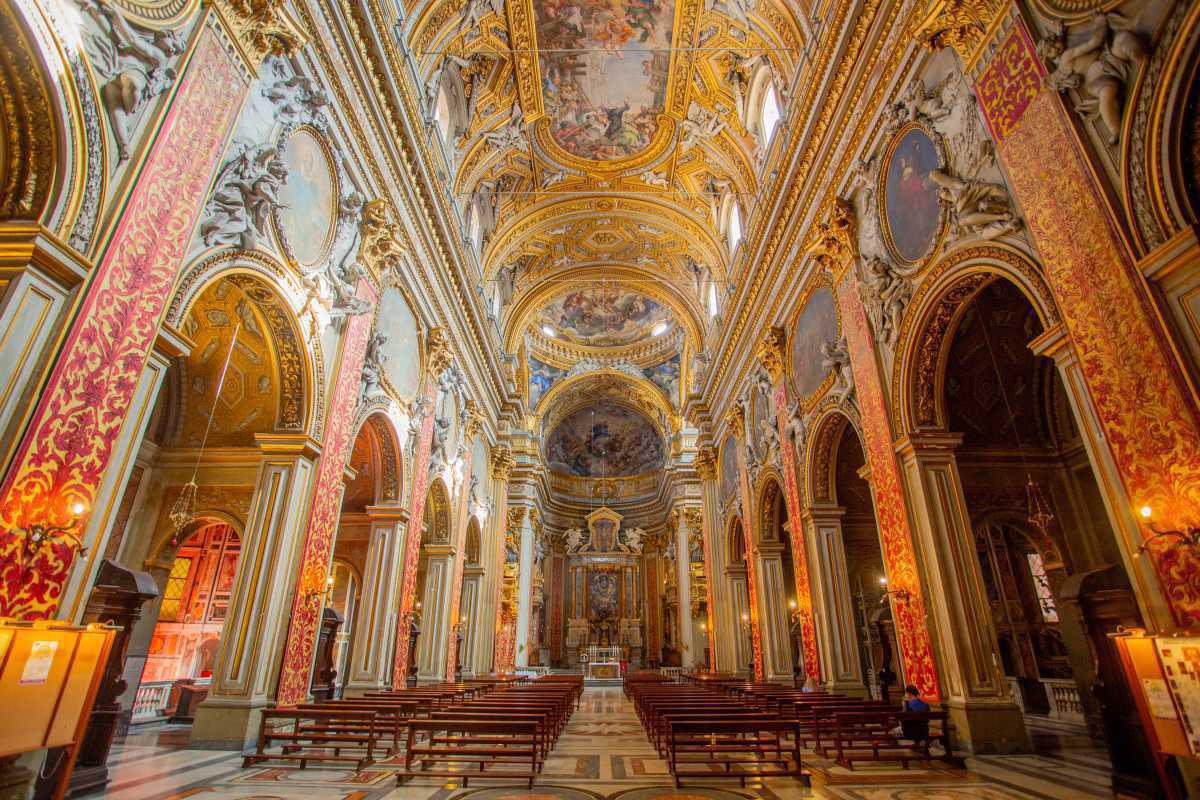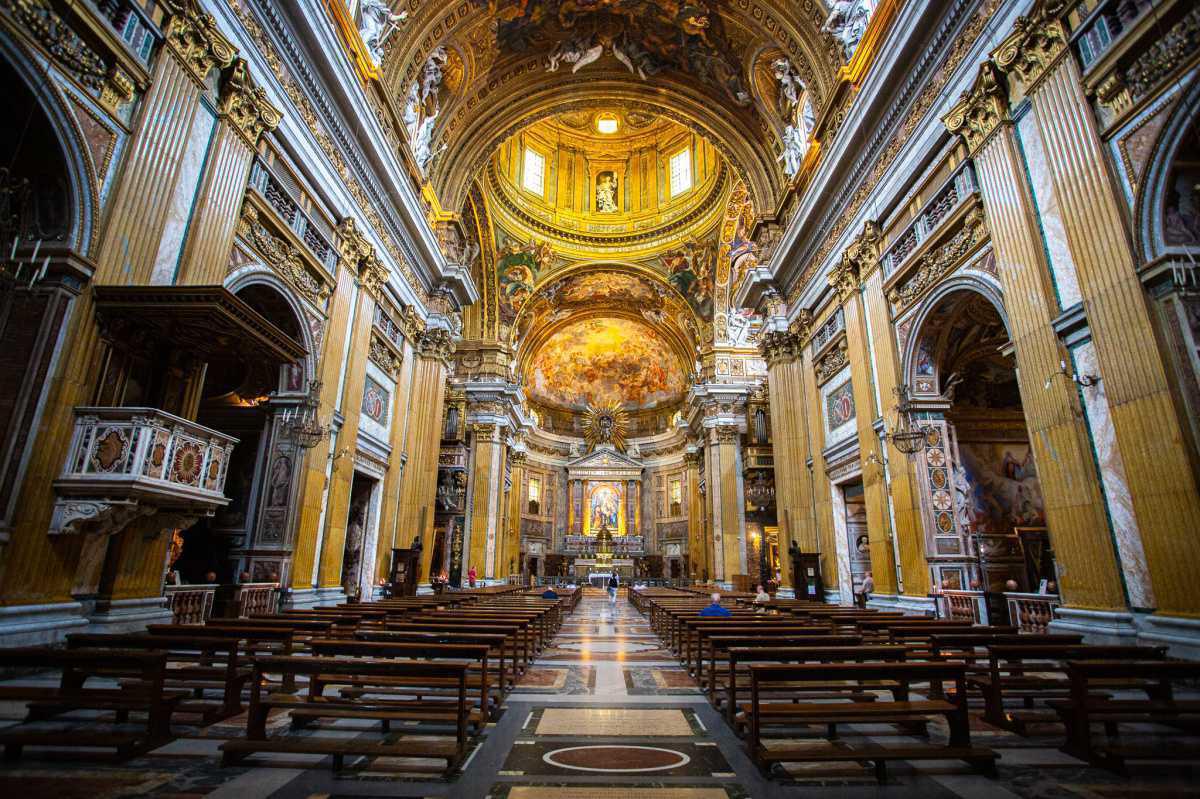Open Map
About this Neighborhood
There is an unwritten rule while on holiday in Rome, "When you see a church, walk inside." Have limited time? This tour is for you!
This walking tour invites you into these great sacred spaces in under an hour and is the fastest route between the Vatican, Piazza Venezia and the Roman Forum. Don't forget to check out the relics of St. Philip Neri, St. Francis Xavier, and the tomb of St. Ignatious of Loyola on the way.
Locations in this Video
Chiesa Nuova (S. Maria in Vallicella)
Baroque Church and resting place of St. Philip Neri, Apostle of Rome
Commonly called the "New Church" in Italian because the new construction replaced the previous church, also called "Santa Maria in Vallicella". The Pope gave the previous church to the Oratorians following the death of St. Phillip Neri, who then rebuilt it as "Chiesa Nuova". It was designed by Dionisio di Bartolomeo in 1592 in the baroque style.
The location is also known as the home of the "Oratory of St. Philip Neri", who were authorized to organize themselves as a congregation at this place by Pope Gregory XIII in 1575, and founded by St. Philip Neri himself. The Rule of the Oratorians was later authorized by Pope Pius V in 1612.
Basilica of Sant'Andrea della Valle ( St. Andrew of the Valley)
From Peretti to Maderno: The Architectural Brilliance of Sant'Andrea della Valle
Sant'Andrea della Valle began in 1591, funded by Cardinal Alessandro Peretti di Montalto. Initially designed by Gian Francesco Grimaldi and Giacomo Della Porta, it was completed by Carlo Maderno, who raised the dome. The travertine façade by Carlo Rainaldi dates to the late 17th century. The church's interior has a Latin cross plan, a large nave with eight tall chapels, including the "Tosca Chapel," and a dome adorned with Giovanni Lanfranco's Baroque frescoes.
Chiesa del Gesú
Mother church of the Society of Jesus. Tomb of St. Ignatius of Loyola & Relics of St. Francis Xavier
This church is the epitome of Baroque art . High ceilings are covered in golden arches of intricate carvings. White angels twirl and sing during the opening of the heavens. Billowing clouds and rays of sunshine break through the frame of the ceiling's painting.
This artistic and architectural style was developed to evoke spiritual emotions in response to the Protestant Reformation by using vivid colors and elaborate movements. Chiesa del Gesù is the mother church for the Jesuits and was built in 1568. It is home to the altar and tomb of St. Ignatius of Loyola.




